
Akron–Canton Airport is a commercial airport in the city of Green, in southern Summit County, Ohio. The airport is located about 14 miles (23 km) southeast of Akron and 10 miles (16 km) northwest of Canton. It is jointly operated by Summit County and Stark County. The airport is a "reliever" airport for Northeast Ohio and markets itself as "A better way to go", emphasizing the ease of travel in comparison to Cleveland Hopkins International Airport. Just under 90% of its traffic is general aviation. It is included in the Federal Aviation Administration (FAA) National Plan of Integrated Airport Systems for 2019–2023, in which it is categorized as a small-hub primary commercial service facility.

Brown Field Municipal Airport is in the Otay Mesa neighborhood of San Diego, California, United States, 13 miles (21 km) southeast of Downtown San Diego and named in honor of Commander Melville S. Brown, USN, who was killed in an airplane crash in 1936. Its main runway is 7,972 feet (2,430 m) long. Its FAA/IATA airport code is SDM. Formerly Naval Auxiliary Air Station Brown Field, it is now a civilian reliever airport and a port of entry from Mexico. It is sometimes staffed by the U.S. Customs Service, but only upon request of incoming pilots to the Federal Aviation Administration. The development plans for the SDM airport have been announced on 4th Oct 2022, the development will occur in phases over 20 years. The plans include a new FBO terminal building and individual airplane hangars. There is also talk of adding a million square feet of retail and industrial buildings and possibly a hotel.

North Las Vegas Airport is a public-use airport 3 mi (4.8 km) northwest of downtown Las Vegas in North Las Vegas, Nevada. It is owned by the Clark County Commission and operated by the Clark County Department of Aviation.

John C. Tune Airport is a public airport located in the western portion of the city of Nashville in Davidson County, Tennessee, United States. It is owned by the Metropolitan Nashville Airport Authority, located approximately one mile off of Briley Parkway in the Cockrill Bend area. It is a Class D airport.
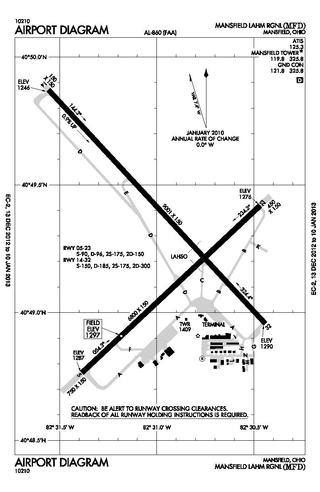
Mansfield Lahm Regional Airport is three miles (5 km) north of Mansfield, in Richland County, Ohio. By car the airport is an hour away from Cleveland and Columbus, near Interstate I-71, US Rt 30, State Route 13.
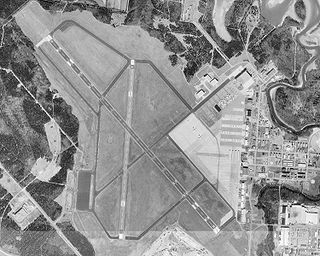
Smyrna Airport is a public general aviation and military use airport located two nautical miles (4 km) north of the central business district of Smyrna, a town in Rutherford County, Tennessee, United States. It is owned by the Smyrna / Rutherford County Airport Authority. Smyrna Airport is the third largest airport in Tennessee and is the state's busiest general aviation airport. Prior to March 1971, the facility was an active military installation known as Sewart Air Force Base.
Cheboygan County Airport is a public use airport located two nautical miles (3.7 km) west of the central business district of Cheboygan, a city in Cheboygan County, Michigan, United States. It is owned by the Cheboygan Airport Authority. It is included in the Federal Aviation Administration (FAA) National Plan of Integrated Airport Systems for 2017–2021, in which it is categorized as a basic general aviation facility. The airport is accessible from Levering Road and is close to US Highway 23.
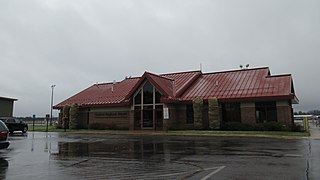
Gaylord Regional Airport is a county-owned, public-use airport located one nautical mile (2 km) southwest of the central business district of Gaylord, a city in Otsego County, Michigan, United States. It is included in the Federal Aviation Administration (FAA) National Plan of Integrated Airport Systems for 2017–2021, in which it is categorized as a local general aviation facility.
Fairfield County Airport is a public use airport in Fairfield County, Ohio, United States. It is located three nautical miles (6 km) northwest of the central business district of Lancaster, the county seat. The airport is owned by the Fairfield County Commissioners.
Griffing Sandusky Airport was a public airport in Erie County, Ohio, next to Sandusky Bay three miles southeast of Sandusky. The airport permanently closed on December 31, 2013 and the FAA A/FD and VFR sectional charts no longer show the airport as open or operational. Instrument approach procedures are no longer available from the FAA's website. All hangars and the entrance were demolished in April, 2016. The Sandusky Register confirmed that the city announced that a sports park will replace the airport and now has opened in spring 2017 called the Cedar Point Sports Center.

Joliet Regional Airport is a public use airport located four nautical miles (7 km) west of the central business district of Joliet, a city in Will County, Illinois, United States. It is owned by the Joliet Park District.

On July 16, 1999, John F. Kennedy Jr. was killed when the light aircraft he was flying crashed into the Atlantic Ocean off Martha's Vineyard, Massachusetts. Kennedy's wife Carolyn Bessette and sister-in-law Lauren Bessette were also on board and were killed. The Piper Saratoga departed from New Jersey's Essex County Airport; its intended route was along the coastline of Connecticut and across Rhode Island Sound to Martha's Vineyard Airport.
Dyersburg Regional Airport is two miles south of Dyersburg, in Dyer County, Tennessee, United States. It was formerly Dyersburg Municipal Airport.

On August 8, 2009, at 11:53 a.m. (15:53 UTC), nine people died when a tour helicopter and a small private airplane collided over the Hudson River near Frank Sinatra Park in Hoboken, New Jersey, United States. The aircraft were in an area known as the "Hudson River VFR Corridor", which extends from the surface of the river to altitudes of 800 to 1,500 ft at various locations along the Hudson River in the immediate area of New York City. Within this corridor, aircraft operate under visual flight rules (VFR), under which the responsibility to see and avoid other air traffic rests with the individual pilots rather than with the air traffic controller.

Grimes Field is a city-owned public-use airport located one nautical mile (1.85 km) north of the central business district of Urbana, a city in Champaign County, Ohio, United States. The airport is named after Warren G. Grimes, a forefather in the field of aviation lighting, and his Grimes Manufacturing Company operated the airport until 1987. It primarily serves general aviation traffic. Although it is owned by the City of Urbana, Grimes Field is self-supporting.
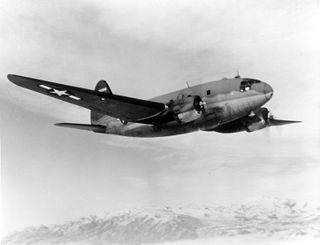
Continental Charters Flight 44-2, a domestic non scheduled passenger flight from Miami, Florida to Buffalo, New York, crashed on December 29, 1951 near Napoli, New York. The twin engine C-46 Commando, registration N3944C, crashed approximately 10:25 pm in adverse weather conditions. Of the four crew and 36 passengers on board, three crew members and 23 passengers perished. The flight crew's poor judgment in attempting a flight by visual reference during instrument weather conditions was the cause of the accident.

Cornelia Fort Airpark was a privately owned, public-use airport located five nautical miles northeast of the central business district of Nashville, in Davidson County, Tennessee, United States. It is named in honor of Nashvillian, Cornelia Fort, the first female pilot to be killed on war duty in American history. The airpark was built in 1945 near her family farm. The 141-acre airport was located on part of a plot of land granted to early Nashvillian Ephraim McLean for service in the Revolutionary War, near what is still known as McLean's Bend in the Cumberland River in East Nashville. The airport operated from 1944 until 2011, when the city of Nashville acquired it to include it as non-aviation part of Shelby Park.
Mackinac County Airport is a county-owned public-use airport in Mackinac County, Michigan, United States. It is located 2 nautical miles northwest of the central business district of St. Ignace. It is the closest airport to Mackinac Island Airport with a refueling station, and is a major stopover destination for flights to and from Mackinac Island that require refueling. The airport is included in the Federal Aviation Administration (FAA) National Plan of Integrated Airport Systems for 2017–2021, in which it is categorized as a local general aviation facility.
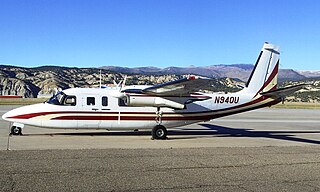
The 1971 Colorado Aviation Aero Commander 680 crash claimed the life of decorated American World War II veteran Audie Murphy and five other people on May 28, 1971. The aircraft's passengers were on a business trip from Atlanta, Georgia, to Martinsville, Virginia, aboard an Aero Commander 680 Super twin-engined aircraft owned and operated by Colorado Aviation Co, Inc. The aircraft crashed into the side of Brush Mountain, 14 nautical miles northwest of Roanoke, Virginia, during conditions of poor visibility.
Holmes County Airport is a public airport located two miles southwest of Millersburg, Ohio, United States. It is owned and operated by the Holmes County Airport Authority.














